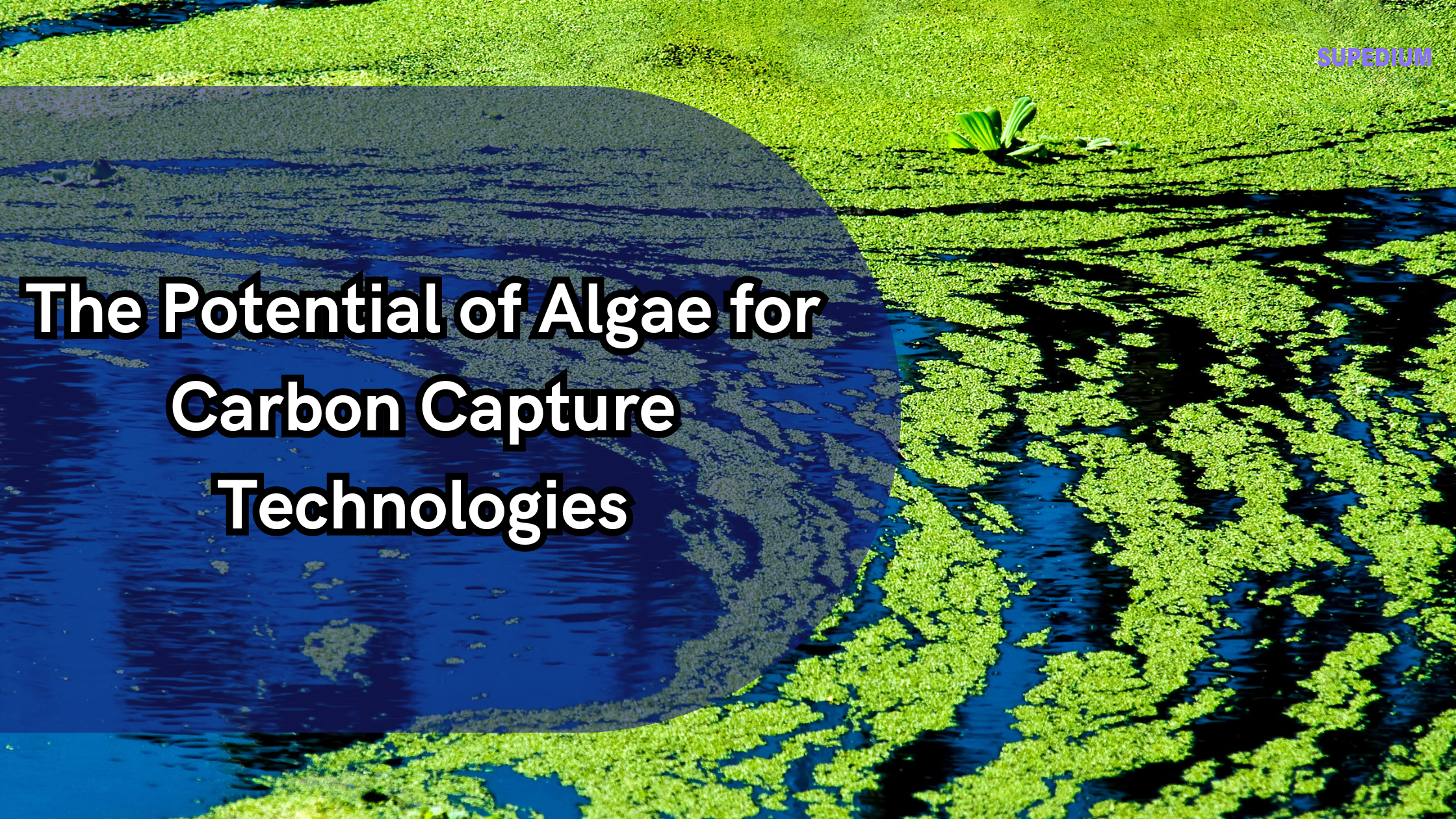Table of Contents
![]()
I. Introduction
A. Overview of Climate Change and Carbon Emissions
Climate change, driven primarily by the accumulation of greenhouse gases in the atmosphere, is one of the most pressing challenges of our time. Among these gases, carbon dioxide (CO₂) is a major contributor to global warming. The burning of fossil fuels, deforestation, and industrial processes have led to unprecedented levels of CO₂, which trap heat and alter global climate patterns. As a result, there is an urgent need for effective and innovative solutions to mitigate CO₂ emissions.
B. Introduction to Carbon Capture Technologies
Carbon capture technologies aim to capture CO₂ emissions from sources such as power plants and industrial processes, preventing them from entering the atmosphere. These technologies generally fall into three categories: post-combustion capture, pre-combustion capture, and oxy-fuel combustion. While these methods are effective to varying degrees, they face challenges related to cost, efficiency, and scalability.
C. Emergence of Algae as a Carbon Capture Solution
In recent years, algae have emerged as a promising candidate for carbon capture. Algae, through their natural photosynthesis process, can absorb CO₂ from the atmosphere and convert it into biomass. This approach offers several advantages over traditional methods, including higher efficiency in CO₂ absorption and the potential for diverse applications.
II. Biological Mechanism of Algae for Carbon Capture
A. Photosynthesis in Algae
Photosynthesis in algae is the process through which these organisms use sunlight to convert CO₂ and water into glucose and oxygen. Algae possess specialized pigments, such as chlorophyll, that capture light energy, making them highly efficient at photosynthesis. Compared to terrestrial plants, algae can have higher rates of CO₂ absorption due to their rapid growth and high surface area-to-volume ratio.
B. Algal Growth and Carbon Uptake
Several factors influence algal growth and CO₂ uptake, including light intensity, nutrient availability, and CO₂ concentration. Algae can be categorized into microalgae and macroalgae. Microalgae, which include species such as Chlorella and Spirulina, are microscopic and often cultivated in controlled environments. Macroalgae, such as kelp and seaweed, are larger and typically grow in marine environments. Both types have distinct growth requirements and carbon capture capabilities.
III. Types of Algae and Their Carbon Capture Efficiency
A. Microalgae
Microalgae are known for their rapid growth rates and high photosynthetic efficiency. For instance, Chlorella can achieve CO₂ fixation rates up to ten times higher than terrestrial plants. Spirulina, another type of microalgae, is also highly efficient and has been used in various carbon capture experiments. The ability of microalgae to thrive in a wide range of conditions makes them versatile candidates for carbon capture.
B. Macroalgae
Macroalgae, including kelp and seaweed, offer unique advantages for carbon capture. Kelp forests can sequester significant amounts of CO₂ and provide ecological benefits such as habitat formation. Seaweed cultivation can also be integrated with marine aquaculture, adding further value. Macroalgae have a slower growth rate compared to microalgae but can capture CO₂ over larger areas, making them suitable for large-scale applications.
C. Comparative Analysis
Comparing the efficiency of microalgae and macroalgae involves evaluating their CO₂ absorption rates, growth conditions, and scalability. While microalgae can achieve higher rates of CO₂ fixation per unit area, macroalgae can cover extensive areas and contribute to carbon sequestration in marine environments. The choice between microalgae and macroalgae depends on specific application needs and environmental conditions.
IV. Algae Cultivation Systems
A. Open Ponds
Open pond systems are one of the most common methods for cultivating algae. These systems are relatively simple and cost-effective, involving shallow ponds where algae grow in natural sunlight. However, open ponds are susceptible to contamination, fluctuating environmental conditions, and limited control over growth parameters. Despite these challenges, they are suitable for large-scale cultivation and are widely used in commercial algae production.
B. Photobioreactors
Photobioreactors are closed systems designed to optimize algal growth by controlling environmental conditions such as light, temperature, and CO₂ concentration. Types of photobioreactors include tubular, flat-panel, and vertical designs. While photobioreactors offer higher control and efficiency, they are more complex and costly compared to open ponds. They are particularly useful for high-value applications and research purposes.
C. Hybrid Systems
Hybrid systems combine elements of both open ponds and photobioreactors to leverage their respective advantages. For example, a hybrid system might use open ponds for initial algae cultivation and photobioreactors for optimizing growth and maximizing CO₂ absorption. This approach can balance cost, efficiency, and scalability, making it a flexible option for various applications.
V. Applications of Algae-Based Carbon Capture
A. Industrial Applications
Algae-based carbon capture can be integrated into industrial processes such as power generation and manufacturing. For example, algae systems can be coupled with flue gas emissions from power plants to absorb CO₂ before it is released into the atmosphere. Several case studies demonstrate the feasibility of this approach, highlighting both the potential benefits and the technical challenges involved.
B. Wastewater Treatment
Algae play a dual role in wastewater treatment by removing nutrients and capturing CO₂. In wastewater treatment facilities, algae can absorb pollutants and CO₂, improving water quality and reducing greenhouse gas emissions. This integrated approach offers a cost-effective solution to both environmental and climate challenges, with several successful implementations reported.
C. Carbon Credits and Economic Considerations
Algae-based carbon capture has the potential to generate carbon credits, which can be traded or sold to offset emissions from other sources. The economic viability of algae technologies depends on factors such as cultivation costs, processing efficiency, and market conditions. While algae-based systems can be competitive, ongoing research and development are necessary to reduce costs and enhance their economic attractiveness.
VI. Challenges and Limitations
A. Technical Challenges
Scaling up algae-based carbon capture from laboratory settings to industrial applications presents technical challenges. Issues such as contamination, maintaining optimal growth conditions, and system integration need to be addressed. Developing robust and reliable cultivation systems is crucial for overcoming these barriers.
B. Economic and Financial Barriers
The cost of cultivating and processing algae for carbon capture can be high. Factors such as the initial investment in infrastructure, operational expenses, and competition with other carbon capture technologies impact the economic feasibility. Strategies to reduce costs, such as improving cultivation efficiency and utilizing by-products, are essential for making algae-based solutions more financially viable.
C. Environmental and Ecological Concerns
The environmental impact of algae cultivation, including potential effects on local ecosystems and risks associated with invasive species, must be carefully considered. Sustainable practices and regulatory measures are needed to ensure that algae-based carbon capture does not inadvertently harm natural environments or biodiversity.
VII. Future Directions and Innovations
A. Advances in Algae Research
Ongoing research is focused on enhancing the efficiency of algae-based carbon capture through genetic engineering and biotechnology. Developing algal strains with improved CO₂ fixation rates and resilience to environmental stresses holds promise for advancing this technology. Innovations in algal cultivation and processing techniques are also expected to play a significant role.
B. Integration with Renewable Energy Sources
Integrating algae-based carbon capture with renewable energy sources such as solar and wind can create synergistic benefits. For example, algae systems powered by renewable energy can enhance sustainability and reduce the overall carbon footprint. Exploring off-grid and decentralized applications further expands the potential of algae technologies.
C. Policy and Regulatory Framework
Supportive policies and incentives are crucial for promoting the adoption of algae-based carbon capture technologies. Establishing standards, providing financial incentives, and fostering collaboration between stakeholders can accelerate the development and deployment of these technologies. Global adoption and standardization will be key to maximizing their impact on climate change mitigation.
VIII. Conclusion
A. Summary of Key Points
Algae offer significant potential for carbon capture through their natural photosynthetic processes. With their ability to absorb CO₂ efficiently and diverse applications, algae-based technologies present a viable alternative to traditional carbon capture methods. While challenges related to scalability, cost, and environmental impact exist, ongoing research and innovations hold promise for overcoming these obstacles.
B. Final Thoughts
The development and deployment of algae-based carbon capture technologies are critical components of a comprehensive strategy to address climate change. Continued research, investment, and supportive policies will be essential for unlocking the full potential of algae in mitigating CO₂ emissions and contributing to a more sustainable future.
Share This




Be the first to comment